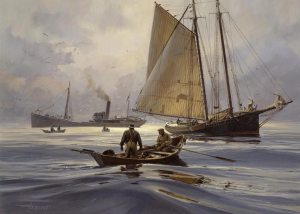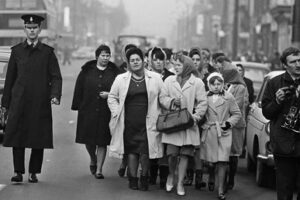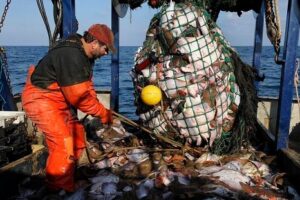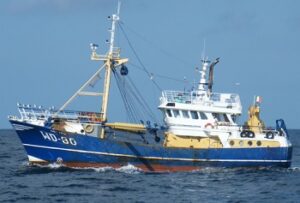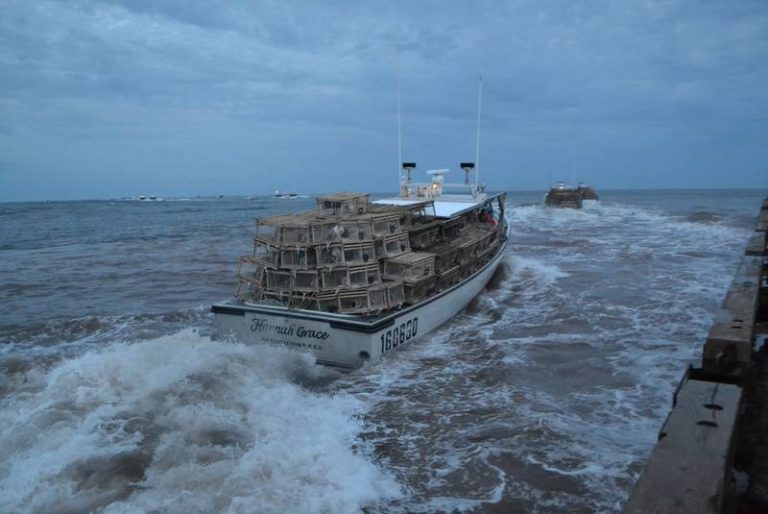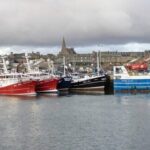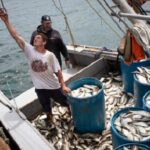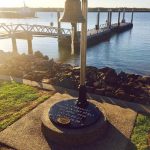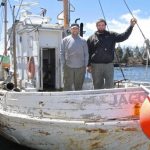Tag Archives: fishing history

50 years plus boat history: Islander BA 316
Launched by Alexander Noble and Sons of Girvan as yard number 58, Islesman SY 433 was built as a trawler with a Kelvin T6 180hp for Alexander McLean of Ness on the Isle of Lewis. She was financed through the Highlands and Islands Development Board (HIDB) grant scheme and was also used for training up crews for other new builds at the time. There had been another Islesman in Stornoway, registered SY 248, which had been built by Jones of Buckie as MFV  324 in 1945. This was converted for fishing in 1949 as Craigewan PD 416, and subsequently sold to Stornoway in 1961, when she was renamed Islesman. This was the first HIDB training boat in Lewis, skippered, I believe, by Jimmy Chisholm. That vessel was sold to Northern Ireland in 1964 and re-registered N 246. Photos, more, >>CLICK TO READ<< 09:31
324 in 1945. This was converted for fishing in 1949 as Craigewan PD 416, and subsequently sold to Stornoway in 1961, when she was renamed Islesman. This was the first HIDB training boat in Lewis, skippered, I believe, by Jimmy Chisholm. That vessel was sold to Northern Ireland in 1964 and re-registered N 246. Photos, more, >>CLICK TO READ<< 09:31
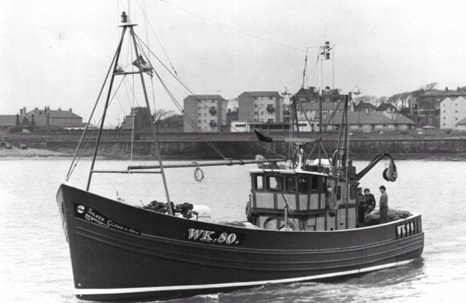
50 years and counting: Silver Cloud II WK 80
George Carter was born and bred in the Caithness village of Lybster, by the harbour, and he fished straight out of school, getting his skipper’s ticket in 1956 at the age of 21. His father Hugh was a fish curer with small creel boat, and his grandfather had always been keen to say that he’d never earned a penny on dry land! The Carter family have gone down in history with two record catches with the seine-net. In 1964, George’s brother Jack landed a record of 240 boxes of cod in a single drag in the Freswick grounds in the north of the Moray Firth aboard the Maid of Honour WK 30, which was built in 1950 by David Howarth of Scalloway (of Shetland Bus fame). Then George, aboard the Silver Cloud, landed 378 boxes with two drags in 1966. The 47ft Silver Cloud WK 207 was George’s first boat, which he purchased in 1962. That vessel was built at Bolson’s yard in Poole as an Admiralty MFV, and by 1951 was owned by John Watt of Fraserburgh, re-registered as FR 313. In 1952 she was sold to Tom Scott Goodlad of Scalloway and re-registered as LK 217. Tom tragically died onboard in May 1958. His brother John then took the boat. more, >>CLICK TO READ<< 07:38
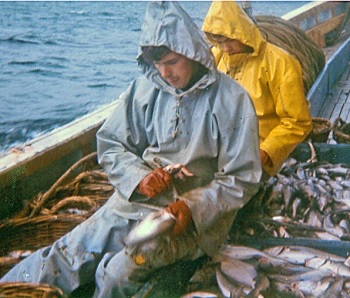
A lifetime at sea
Retired skippers John Arthur Irvine and Willie Williamson have more than 100 years of fishing between them. Both played a key roll in progressing Whalsay’s pelagic fishing industry to what it is today. Here they share some of their stories with Cloe Irvine. They worked close to shore and learning from the older hands of how to navigate using fishing ‘meids’ was essential. When the first Decca navigators came in they helped a bit but they were a far cry from the satellite navigation that is the standard today. Recalling those early fishing trips to John Arthur, now 77 years old, said it had been vital to take on board the lessons that the older generation had passed on. “We didn’t even have a radar when we first went to Aberdeen, with stacked mist half of the time. >click to read< 08:11

Daughter of Reedville Fisherman’s Museum Founder Named President
Passion, love of a cause and, and energy – Becky Haynie of Reedville, Va. checks all three boxes for the Reedville Fishermen’s Museum where she was recently elected president of the board of directors. Becky’s passion and love of the job comes from her late father Wendell Haynie who passed away Dec. 20, 2020. Wendall, his brother Braxton and Alice Butler spearheaded the formation of the Greater Reedville Association in 1988, which led to the creation of the museum.,, “My father grew concerned that so many artifacts were disappearing off the boats and that there would not be any left for posterity,” she said. “He wanted to create a home to secure and display them. I want to make sure that home is secure too. >click to read< 09:05
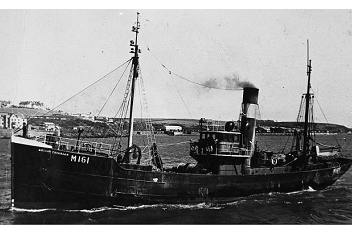
That Reminds Me: The Arthur Cavanagh and the end of an era
“At precisely 8 0’clock on the morning of Jan 10th (1962), the old trawler Arthur Cavanagh unobtrusively slipped her moorings in Milford docks, and with a farewell blast on her siren, began the last journey of her eventful life. On the face of it, this departure of an ageing ship for the scrapyards, merits no widespread regret, being an everyday event, yet when Arthur Cavanagh rounded St Anne’s Head, it marked the end of an era on the West Coast, the passing of a class of trawler the like of which, in terms of services rendered, will never have its peer. The Arthur Cavanagh was the last of the West Coast’s Castle class trawlers which probably played a greater part in the development of the country’s hake fishery than any other single factor. >click to read< 13:15
More information, photos, and stories of ARTHUR CAVANAGH LO407 / M184 / M16, >click here<

April 8 – 1950: Eight fishermen drown in sight of Lightship Pollock Rip
On this day in 1950, a fishing boat with eight men aboard sank with no survivors off Chatham after its crew struggled for hours to remain afloat in a howling gale.”The William Landry, a 63-foot scallop dragger out of New Bedford, was smashed to pieces by pounding seas while struggling toward a lightship stationed at Pollock Rip in Nantucket Sound,” the Associated Press reported. >click to read<10:00
Celebrate the pragmatic elegance of gasoline marine engines
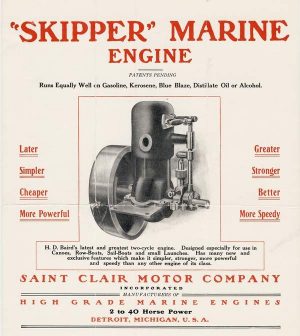 Gasoline marine engines revolutionized working life on the Columbia River estuary the way cotton gins did in the South, but they don’t get much respect. In the course of a half a tide, the river can go from mirror-like lake to something resembling a Michael Bay disaster movie. It’s a deceptive monster, one which generations of native and white fishermen were obliged to ride in little wooden boats. Until around 1900, the river’s sailing gillnet boats were at the whim of the wind, relying on canvas and oars to navigate the wild waters of the estuary and ocean plume in pursuit of salmon. Brave and courageous as they were, there wasn’t much they could do when a typhoon blew itself out on this fatal shore, driving boats onto the rocks like jellyfish drifted up on the beach. View five photo’s, and read the story here 15:24
Gasoline marine engines revolutionized working life on the Columbia River estuary the way cotton gins did in the South, but they don’t get much respect. In the course of a half a tide, the river can go from mirror-like lake to something resembling a Michael Bay disaster movie. It’s a deceptive monster, one which generations of native and white fishermen were obliged to ride in little wooden boats. Until around 1900, the river’s sailing gillnet boats were at the whim of the wind, relying on canvas and oars to navigate the wild waters of the estuary and ocean plume in pursuit of salmon. Brave and courageous as they were, there wasn’t much they could do when a typhoon blew itself out on this fatal shore, driving boats onto the rocks like jellyfish drifted up on the beach. View five photo’s, and read the story here 15:24
When Whitburn fishermen plotted to overthrow the king
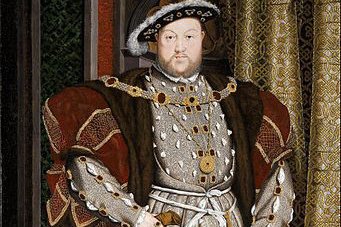 Today we recall the time when local fishermen begged to get rid of a man who was making their lives a misery. But he wasn’t just any old chap, as historian Douglas Smith explains, he was the king of England – Henry VIII. “It was the day the fishermen of Whitburn begged a Scottish king to rid them of the English king – a man they blamed for many of the miseries of life in a small fishing village.” The plea for help followed a revolt in 1536, known as the Pilgrimage of Grace, against several royal enactments, principally the dissolution of great monasteries and abbeys. Much blame was popularly placed on Thomas Cromwell, chief minister to Henry VIII, who was “the cause of all our miseries and heresies” – according to those behind the rebellion. Two parts, P-1 today, P-2 tomorrow Read the rest here 12:18
Today we recall the time when local fishermen begged to get rid of a man who was making their lives a misery. But he wasn’t just any old chap, as historian Douglas Smith explains, he was the king of England – Henry VIII. “It was the day the fishermen of Whitburn begged a Scottish king to rid them of the English king – a man they blamed for many of the miseries of life in a small fishing village.” The plea for help followed a revolt in 1536, known as the Pilgrimage of Grace, against several royal enactments, principally the dissolution of great monasteries and abbeys. Much blame was popularly placed on Thomas Cromwell, chief minister to Henry VIII, who was “the cause of all our miseries and heresies” – according to those behind the rebellion. Two parts, P-1 today, P-2 tomorrow Read the rest here 12:18
A fishing Veteran returns to harbor
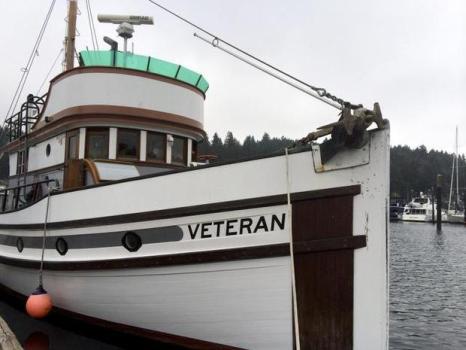 Jake Bujacich and Nick Fahey sat in the fo’c’sle (the front underside of a boat, for those unfamiliar with maritime lingo) of the Veteran and tried to count how many of the boats built at the Skansie Ship Building Company are still around today. The answer was somewhat disappointing: Not many. Read the rest here 16:03
Jake Bujacich and Nick Fahey sat in the fo’c’sle (the front underside of a boat, for those unfamiliar with maritime lingo) of the Veteran and tried to count how many of the boats built at the Skansie Ship Building Company are still around today. The answer was somewhat disappointing: Not many. Read the rest here 16:03
New Book – From Hooks to Harpoons. Mick Kronman Traces Fishing History
 Mick Kronman may not be the Old Man and the Sea, but he’s getting close. For the past umpteen years, Kronman has worked for Santa Barbara’s Waterfront Department, where he keeps in constant contact with those who stubbornly keep alive Santa Barbara’s tradition as a working harbor. Before that, Kronman worked as a reporter, covering both county politics and the fishing industry. independent.com Read more here 07:27
Mick Kronman may not be the Old Man and the Sea, but he’s getting close. For the past umpteen years, Kronman has worked for Santa Barbara’s Waterfront Department, where he keeps in constant contact with those who stubbornly keep alive Santa Barbara’s tradition as a working harbor. Before that, Kronman worked as a reporter, covering both county politics and the fishing industry. independent.com Read more here 07:27
Revealed: Fishermen’s work has got 25 times harder in last 150 years

It might sound like a fisherman’s tale, but trawlers have to work 25 times harder to catch the same quantity of fish today as they did 150 years ago, scientists have calculated…Catches had fallen so dramatically by the 1880s that even some trawler owners were calling for bottom trawling to be outlawed out to three miles from the shore, and concern about fish stocks led to landings being recorded from 1886. more@theindependentuk 16:48
From one island to another: Crew recreates Essex-built boat’s Maine voyage
More than 250 years ago, Abraham Somes, his wife Hannah and their four daughters piled into a Chebacco boat in Gloucester and sailed up the coast to Maine, where they settled in what is now Somesville on Mount Desert Island, home to Acadia National Park. continued@gloucesterdailytimes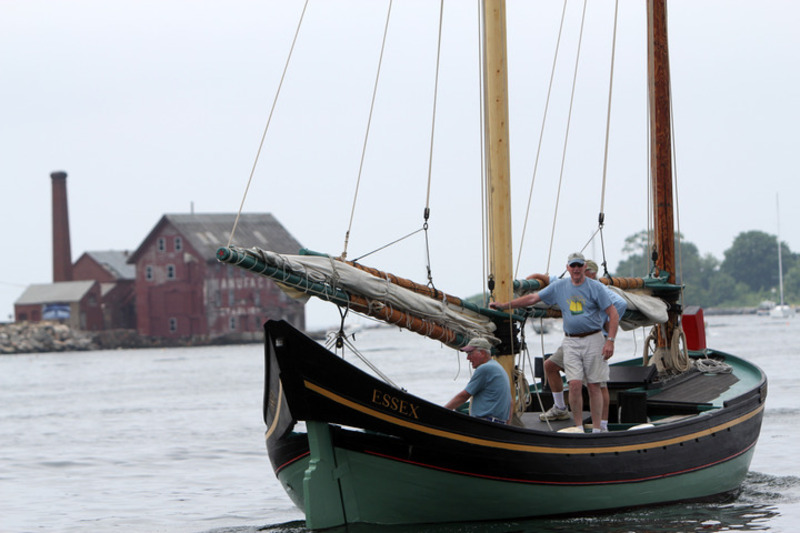
Fishermen and politicians: A lost alliance
It’s a great sound bite. And for men from New Bedford, Chatham, or Boothbay who have had to tie up their boats because of federal regulations, or withdraw from the fishery altogether to make ends meet, it rings painfully true. 1976 marked the moment when the National Marine Fisheries Service actively took over the regulation of fishing, and today’s fishermen have spent most or all of their careers chafing under catch limits, fishing ground closures,,,,,,Read More http://www.bostonglobe.com/ideas/2012/12/16/fishermen-and-politicians-lost-alliance/IndbdEcJwXIIY0AHcqCs1I/story.html
Peabody Essex Museum
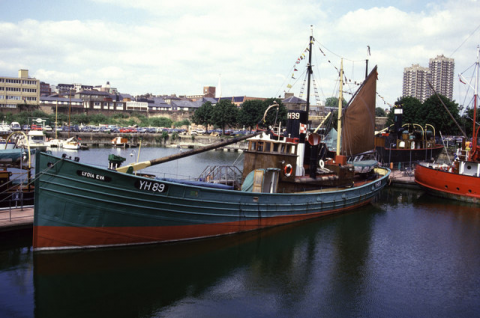
Could the Harp be the Next Tourist Attraction? Christopher Mitchelmore
On September 17th, 2012 I had visited VIKIN Maritime Museum situated on the waterfront of the old harbour in Reykjavik, Iceland. It had impressive displays of boats, engines, gear and equipment. Exhibits outlines the process of drying cod-fish on flakes and lines, as well as the transition to on land processing of fresh and frozen product,,,,,,,,,,Read More!
What a great report frm this young fella from rural Newfoundland & Labrador. Great links and the Google Map showing the Continental Shelf is real cool!
http://liveruralnl.com/2012/10/13/could-the-harp-be-the-next-tourist-attraction/#comment-1552







